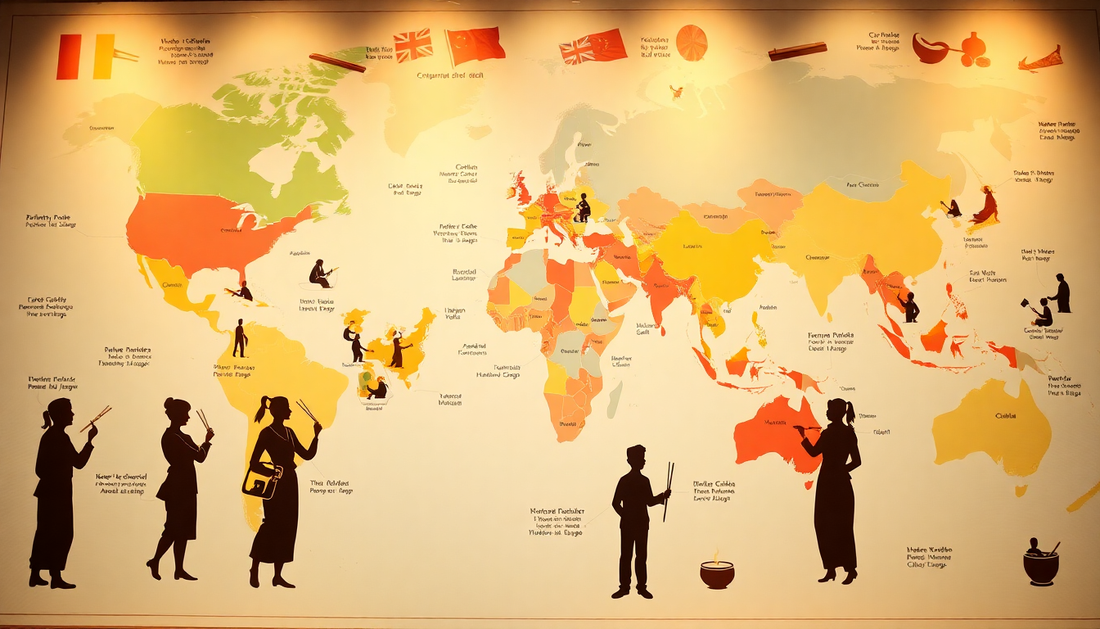The humble chopstick, a pair of slender sticks used for eating, has become an iconic symbol of East Asian cuisine. However, the global landscape of eating utensils is far more diverse than one might assume. From the rolling hills of China to the bustling streets of New York, the way people consume their meals can vary greatly depending on cultural traditions, historical influences, and practical considerations.
A Brief History of Chopsticks
Chopsticks have a long and storied history, with their origins traced back to ancient China over 5,000 years ago. Initially, they were used as cooking utensils, but gradually evolved into the primary eating tools in many East Asian societies. The use of chopsticks spread throughout the region, becoming deeply ingrained in the culinary and cultural practices of countries like Japan, Korea, and Vietnam.
The Dominance of Chopsticks in East Asia
In countries such as China, Japan, and Korea, chopsticks are the undisputed kings of the dining table. These nations have embraced the use of chopsticks as an integral part of their culinary heritage, with each culture developing its own unique styles and etiquette surrounding their use.
For the people of East Asia, chopsticks are more than just a practical tool – they are a symbol of refinement, tradition, and social interaction. Meals are often seen as a communal experience, with family and friends gathering around the table to share dishes and engage in lively conversation. The dexterity required to skillfully maneuver chopsticks is a point of pride, and mastering this art is a rite of passage for many.
Limited Chopstick Usage in Southeast Asia
While East Asia has wholeheartedly embraced the chopstick, the story is a bit different in Southeast Asia. Countries like Thailand, Vietnam, and Indonesia have a more mixed relationship with these eating utensils. In these regions, chopsticks are often used alongside or in addition to other tools, such as spoons and forks.
The reasons for this partial adoption of chopsticks vary. In some cases, it may be due to the prevalence of rice-based dishes, which are more easily consumed with a spoon. In others, the influence of colonial powers, such as the French in Vietnam, has led to the integration of Western-style utensils into the local culinary landscape.
Regions That Do Not Use Chopsticks
Beyond East and Southeast Asia, the use of chopsticks is relatively rare. In Western countries, such as the United States, Canada, and most of Europe, the fork and knife reign supreme as the primary eating tools. Similarly, in the Middle East and Africa, the preference is for hand-based eating or the use of spoons and other utensils.
The reasons for this lack of chopstick adoption are multifaceted. In many of these regions, the traditional cuisines and food preparation methods are better suited to the use of forks, knives, and spoons. Additionally, the cultural and historical influences that have shaped the dining practices in these areas have not included the widespread integration of chopsticks.
Cultural and Practical Factors Influencing Chopstick Usage
The global diversity of eating utensils is not simply a matter of personal preference or cultural tradition. There are a variety of factors that have contributed to the varying levels of chopstick adoption around the world.
One key factor is the type of food commonly consumed in a particular region. In East Asia, where rice, noodles, and bite-sized dishes are prevalent, chopsticks are the ideal tool for efficiently picking up and manipulating these foods. In contrast, Western cuisines often feature larger, more substantial dishes that are better suited to the use of forks and knives.
Historical developments and technological advancements have also played a role in shaping the global landscape of eating utensils. For example, the introduction of Western-style cutlery in certain regions, such as Southeast Asia, has led to a gradual shift away from the exclusive use of chopsticks.
Modern Global Trends
In today's increasingly interconnected world, the boundaries between culinary traditions are becoming more blurred. As people from different cultural backgrounds interact and share their culinary experiences, there is a growing appreciation for the diversity of eating utensils and the traditions that accompany them.
Many global restaurants and eateries now offer a range of utensils, catering to the preferences of their diverse clientele. This cross-cultural exchange has led to a greater understanding and respect for the significance of chopsticks and other eating tools in various cultures.
Conclusion
The global landscape of eating utensils is a tapestry of rich cultural traditions, historical influences, and practical considerations. While chopsticks have become synonymous with East Asian cuisine, their usage and significance vary greatly across different regions of the world.
As we continue to explore and appreciate the diversity of culinary practices, it is important to approach the topic with an open mind and a deep respect for the cultural nuances that shape the way people consume their meals. By understanding the global perspectives on eating utensils, we can foster a greater appreciation for the shared humanity that connects us all through the universal language of food.

